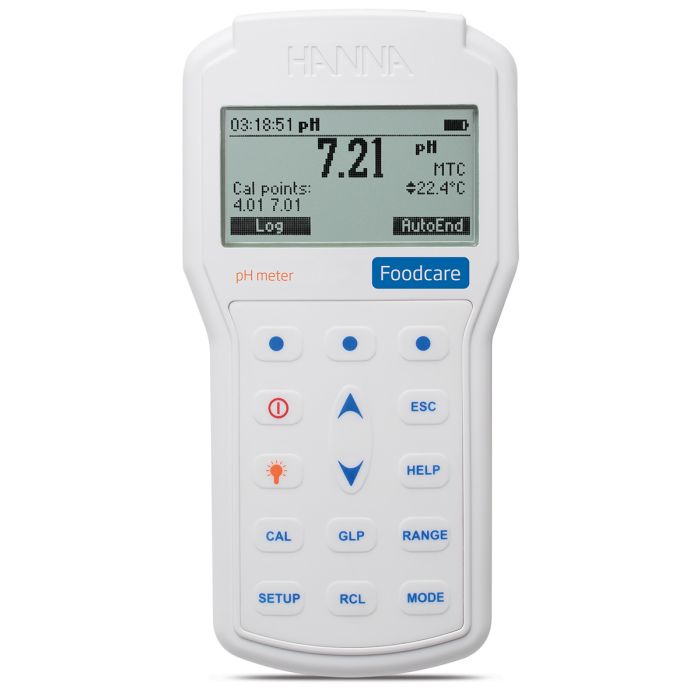
Environmental Monitoring of Nitrates and Other Water Quality Parameters: pH,
Environmental Monitoring of Nitrates and Other Water Quality Parameters: pH,...
Measuring pH in Acidified Foods

To succeed in creating high-quality foods, pH analysis should be at the heart of your strategy. Quantitative analysis needs to be a driving force behind decision-making for food formulations, quality control, and food safety.
Analytical testing can easily be integrated into the food production process. From hobbyists to food scientists, many involved in food quality and safety now use a variety of analytical testing techniques to create stable, safe, and most of all, great-tasting foods.
Analyzing data is of no use unless the data represents the actual condition of the food. The quality of analytical data depends on proper sampling, appropriate method selection, and effective measurement techniques.
This article will discuss how to utilize pH testing to ensure food quality and safety. It will cover how pH affects food quality, as well as the necessary tools and suggested measurement procedures, which will be highlighted for liquid, semisolid, and solid food samples.
pH plays a crucial role in determining the quality of food by influencing its taste, texture, color, and shelf life. Thus, maintaining the appropriate pH level is critical for preserving food quality and safety.
Flavor: Organic acids, such as citric acid, can provide a tart or sour flavor to foods.
Fermentation: pH affects bacteria used in food production to make cheese, yogurt, vinegar, and soy sauce, to name just a few. Yeast performs best at a pH of 4.5-6.0.
Texture: Texture is particularly susceptible to pH changes. Low pH will result in a cheese without shape or hold while high pH causes cheese to crumble.
Appearance: pH plays a role in haze formation and contributes to pigment. Anthocyanins, the red pigments found in berries, turn blue, green, or yellow in alkaline conditions.
Shelf stability: pH prevents spoilage by inhibiting bacterial growth. Bacteria, such as E.coli, require a pH higher than 4.6 to thrive; anything lower will inhibit growth.
Preparing food samples for pH testing involves several steps to ensure accurate and reliable results:
– Choose representative samples that accurately reflect the composition and characteristics of the food product. Ensure the samples are homogeneous and free from any contaminants.
– Direct insertion into liquid samples.
– Solids and semisolids should be processed as a paste of uniform consistency.
– Oil layers may be discarded to reduce clogging.
By having these tools and following proper procedures, you can measure pH accurately and efficiently, providing valuable insights into the quality and characteristics of various food samples.
Accuracy: Provides precise pH measurements within a narrow margin of error, ensuring reliable results.
Speed: Offers fast response times, allowing for efficient testing without unnecessary delays.
Flexibility: Today’s meters offer a wider range of flexibility. A portable meter offers the ability of in-field use with the performance of a benchtop.
Ease of use: Measurement, configuration, calibration, and logging should be easy to do with data management features including direct / USB data transfer.
Simple maintenance: Advanced pH meters have diagnostics capability to inform of problems during the calibration process. Diagnostic messages should include the overall probe condition and whether the probe should be cleaned, or if the buffer is contaminated.
With these characteristics, an ideal pH meter simplifies the testing process while delivering accurate and reliable pH measurements for various applications.

Discover our comprehensive solution tailored to meet measuring pH in acidified foods
The HI98161 is a professional portable pH and temperature meter with a probe designed specifically for pH measurement in the food sector. The HI98161 is supplied with all necessary accessories to perform a pH/temperature measurement packaged into a durable thermoformed carrying case that holds the meters, probes and calibration buffers securely in place.
Environmental Monitoring of Nitrates and Other Water Quality Parameters: pH,...
Salt Concentration In A Brine Solution For Curing Salmon Traditionally,...

To empower customers to achieve quality by supplying intuitive, accurate, and reliable analytical instruments with exceptional customer service and value.
We take pride in every product we build. From an original idea to a completed product ready for testing. We oversee every aspect of the manufacturing process. It is this level of attention to detail that sets us apart.
To empower customers to achieve quality by supplying intuitive, accurate, and reliable analytical instruments with exceptional customer service and value.
We take pride in every product we build. From an original idea, to a completed product ready for testing. We oversee every aspect of the manufacturing process. It is this level of attention to detail that sets us apart.
To empower customers to achieve quality by supplying intuitive, accurate, and reliable analytical instruments with exceptional customer service and value.
We take pride in every product we build. From an original idea, to a completed product ready for testing. We oversee every aspect of the manufacturing process. It is this level of attention to detail that sets us apart.

